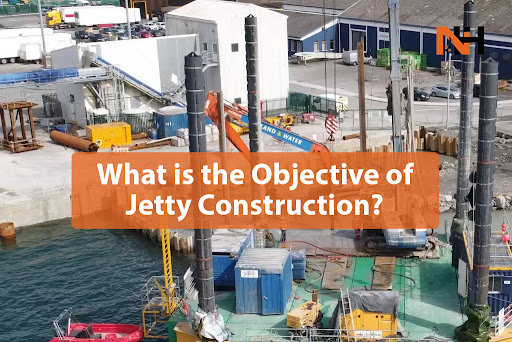
◈ What is the Objective of Jetty Construction?
Jetty construction is a vital component of coastal and marine engineering that plays a crucial role in various industries and sectors, including shipping, fishing, tourism, and environmental protection. A jetty is a man-made structure that extends into the water from the shoreline and is designed to achieve specific objectives related to the management of coastal areas and the safe navigation of vessels. In this article, we will explore the primary objectives of jetty construction and the key factors that influence their design and construction.
Understanding the Purpose of Jetties
1. Navigation and Harbor Development
One of the primary objectives of jetty construction is to enhance navigation and harbor development. Jetties are built at the entrance of ports and harbors to create a protected and navigable channel for vessels to enter and exit. They serve as a barrier against sediment deposition and wave action, allowing ships to safely navigate through the channel even during adverse weather conditions. By stabilizing the entrance channel, jetties facilitate efficient cargo handling and promote economic growth through improved access to ports.
2. Erosion Control
Coastal erosion is a natural process that can threaten infrastructure, property, and ecosystems along the shoreline. Jetties are often constructed to mitigate the effects of erosion by trapping sediment and preventing it from being carried away by waves and currents. They can help build up beaches and protect coastal properties from the encroaching sea, making them an essential tool in coastal defense and protection.
3. Fishery Infrastructure
Jetties are also critical for the fishing industry. They provide a stable platform for fishermen to access deeper waters, improving their catch and safety. Additionally, jetties can create artificial reefs, attracting marine life and enhancing fishery resources in the area. Many fishing communities rely on well-constructed jetties to support their livelihoods and ensure sustainable fishing practices.
4. Coastal Infrastructure and Tourism
In some coastal areas, jetties serve as recreational infrastructure. They create safe and accessible spaces for tourists and locals to enjoy activities such as fishing, sightseeing, and walking. These jetties can contribute to the economic development of coastal communities by attracting tourists and providing opportunities for small businesses.
Factors Influencing Jetty Design and Construction
1. Coastal Geology and Hydrodynamics
The design and location of jetties depend on the specific coastal conditions of the area. Factors such as wave patterns, tidal ranges, and sediment transport rates must be carefully considered to ensure that the jetty effectively achieves its objectives. Coastal engineers conduct extensive studies to assess these factors and determine the optimal jetty design for a given location.
2. Environmental Impact
Environmental considerations are paramount in jetty construction projects. Jetties can alter coastal ecosystems, impact water circulation, and affect sediment transport. Engineers and environmentalists work together to minimize the negative impacts of jetties on the surrounding environment and ensure the preservation of marine habitats.
3. Maintenance and Sustainability
Jetties require regular maintenance to remain effective and safe. Maintenance activities include dredging to remove accumulated sediment, repairs to damaged structures, and monitoring of environmental impacts. Sustainable construction practices are also important to minimize the long-term costs and environmental footprint of jetty projects.
Conclusion
In summary, the objective of jetty construction varies depending on the specific needs of a given coastal area. Whether it's enhancing navigation, controlling erosion, supporting the fishing industry, or promoting tourism, jetties play a crucial role in shaping coastal environments and economies. Successful jetty construction requires a deep understanding of coastal dynamics, careful consideration of environmental impacts, and a commitment to long-term maintenance and sustainability. By achieving these objectives, jetties continue to serve as valuable assets for coastal communities worldwide.
